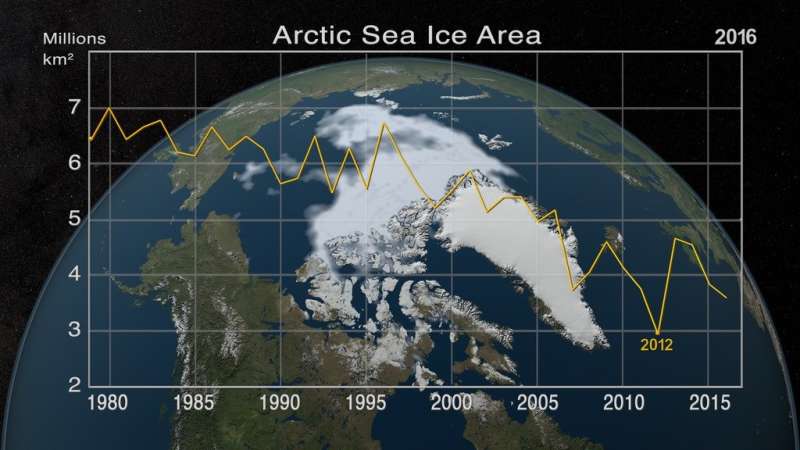Arctic sea ice affects and is affected by mid-latitude weather

Changes in Arctic sea ice have a direct impact on lower atmospheric conditions in the region. However, possible higher altitude and lower latitude impacts of changing sea ice are less well understood. Assessing such far-flung effects of Arctic sea ice change from observations is hindered by, amongst other things, the shortness of reliable observational data sets and difficulties in inferring cause and effect in the complex climate system.
A new study by Dr. Michael Kelleher and Prof. James Screen from the University of Exeter has been published in Advances in Atmospheric Sciences in a special issue, "Towards Improving Understanding and Prediction of Arctic Change and Its Linkage with Eurasian Mid-latitude Weather and Climate." It attempts to circumvent these issues by using a large ensemble of model simulations and by examining lead-lag relationships to better elucidate the direction of influence between Arctic sea ice and the atmospheric circulation. They find evidence that sea ice change is both a driver of and a response to atmospheric variability.
The study suggests that midlatitude atmospheric circulation changes appear to precede and could explain changes in Arctic sea ice and a weakening of the polar stratospheric vortex. The authors argue that whilst low sea ice may further weaken the polar vortex, it appears that in the first instance both the low sea ice and weakened polar vortex are driven by changes in lower latitude weather patterns.
The models reproduce the "warm Arctic, cold continents" winter temperature anomaly pattern seen in the real world. The continental cooling is found one to two months before low sea ice, but is absent in months following low sea ice. This implies that the cooling is not caused by low sea ice, but is instead driven by atmospheric circulation changes that precede and contribute to low sea ice.
More information: Michael Kelleher et al, Atmospheric precursors of and response to anomalous Arctic sea ice in CMIP5 models, Advances in Atmospheric Sciences (2017). DOI: 10.1007/s00376-017-7039-9
Provided by Chinese Academy of Sciences




















